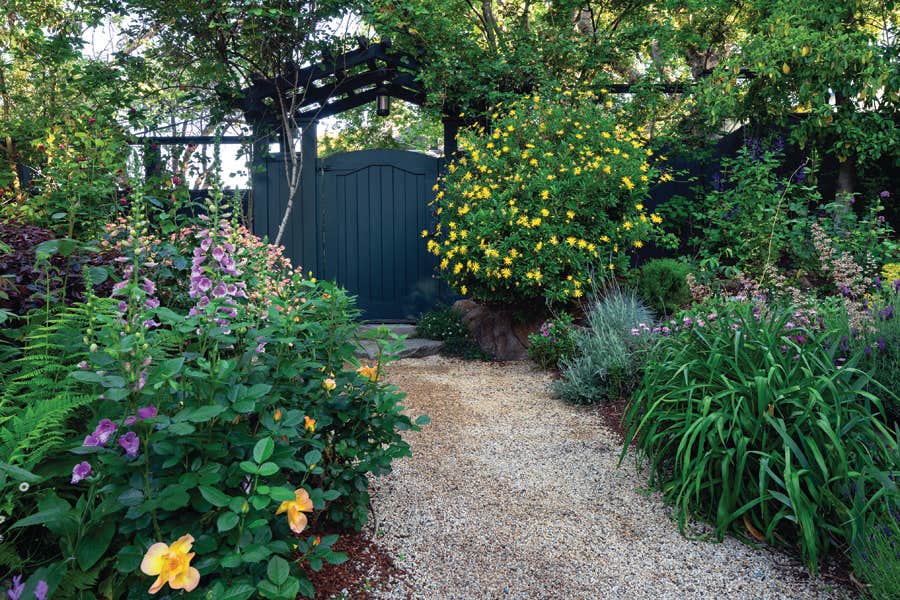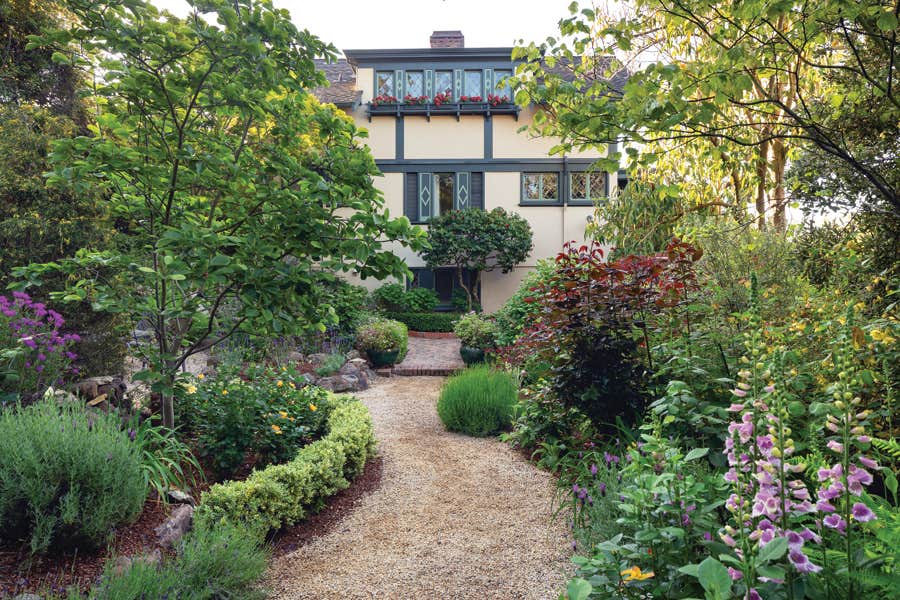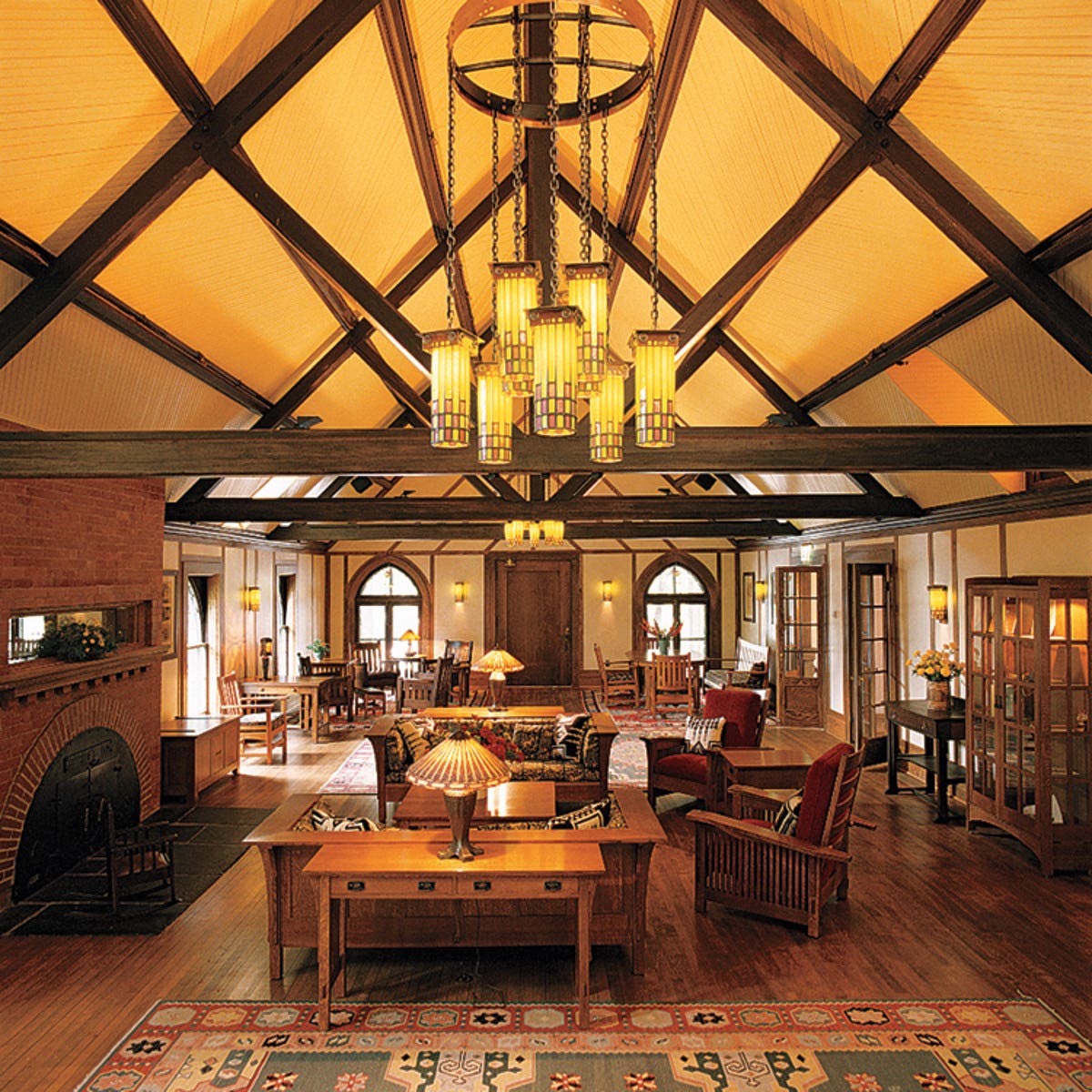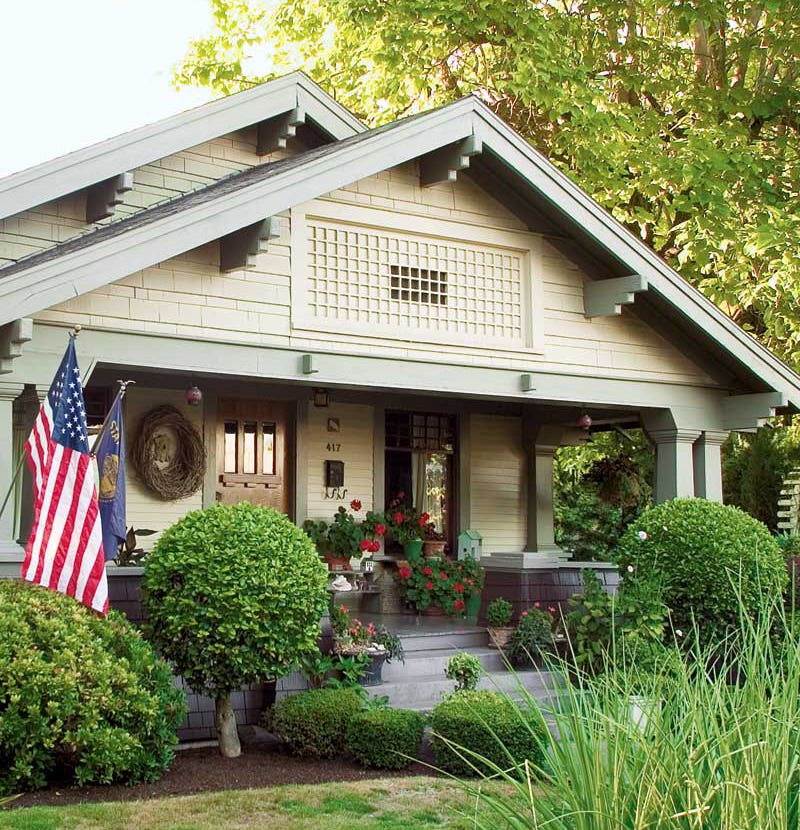The Outdoor Hearth, Fire-Pit & Barbecue
The bungalow and then the California ranch helped popularize indoor–outdoor living, which included cooking en plein air. Fire remains a coveted element, whether it’s flaring in the grille, making embers in a stone “barbecue” of the 1950s, or warming the evening in an outdoor hearth.
Gardens are for people, declared Thomas Church, one of our country’s most influential landscape designers, back in the 1950s. A garden designed by Church was not only beautiful, but also a natural extension of the home—an “outdoor room...a green oasis...primarily for living, eating, and entertaining.”
The indoor–outdoor lifestyle was, of course, central during the era of the bungalow, in California and elsewhere. Once again today, people embrace the idea of the garden as part of their living space. Even if it means putting on earmuffs and a parka, more people are grilling year-round.
The word “barbecue” most likely originates with the Arawak Indians of the Caribbean. Spanish explorers observed these people preserving strips of meat by drying them over smoky fires, on a wooden rack the natives called “barbacoa.” Over time, the process has evolved, with large cuts of meat slow-cooked in fire-pits or on an outdoor stone fireplace. Barbecues became social events: People gathered around the slow fire, sharing cold drinks and swapping stories.
The outdoor fireplace became a popular feature of the American backyard in the 1930s and ’40s. Do-it-yourselfers built them from fieldstone or brick and mortar, using plans published in journals like Popular Mechanics or Sunset magazine. Charcoal was the typical fuel, although people often built fires using hardwood, waiting even longer for the flames to die to hot embers.
Then, in 1951, George Stephen, an employee at Weber Brothers Metal Works, got tired of cooking over a fussy fire where a gust of wind or sudden cloudburst often ruined his juicy steaks. Obviously inspired by Weber’s principal product—buoys constructed of spun metal spheres—George Stephen cut one in half and fashioned a new-fangled barbecue, with a deep bowl for the charcoal and a domed lid to protect the fire and food from wind and rain.
As suburbia came into its own, dads could be seen every summer weekend standing in a cloud of smoke, flipping burgers on one of the new “kettle grilles.” In the late 1960s, portable grilles fueled by propane came on the market. The old stone fireplaces became neglected artifacts with vines growing up through chimneys.
Those mid-century backyard fireplaces were a kind of folk art, and many are appreciated in their state of romantic ruin, or have been restored. More recently, elaborate outdoor fireplaces and “kitchens” have become popular.
Arts & Crafts Homes and the Revival covers both the original movement and the ongoing revival, providing insight for restoration, kitchen renovation, updates, and new construction. Find sources for kitchen and bath, carpet, fine furniture and pottery, millwork, roofing, doors and windows, flooring, hardware and lighting. The Annual Resource Guide, with enhanced editorial chapters and beautiful photography, helps Arts & Crafts aficionados find the artisans and products to help them build, renovate, and decorate their bungalow, Craftsman, Prairie, Tudor Revival, or Arts & Crafts Revival home.








